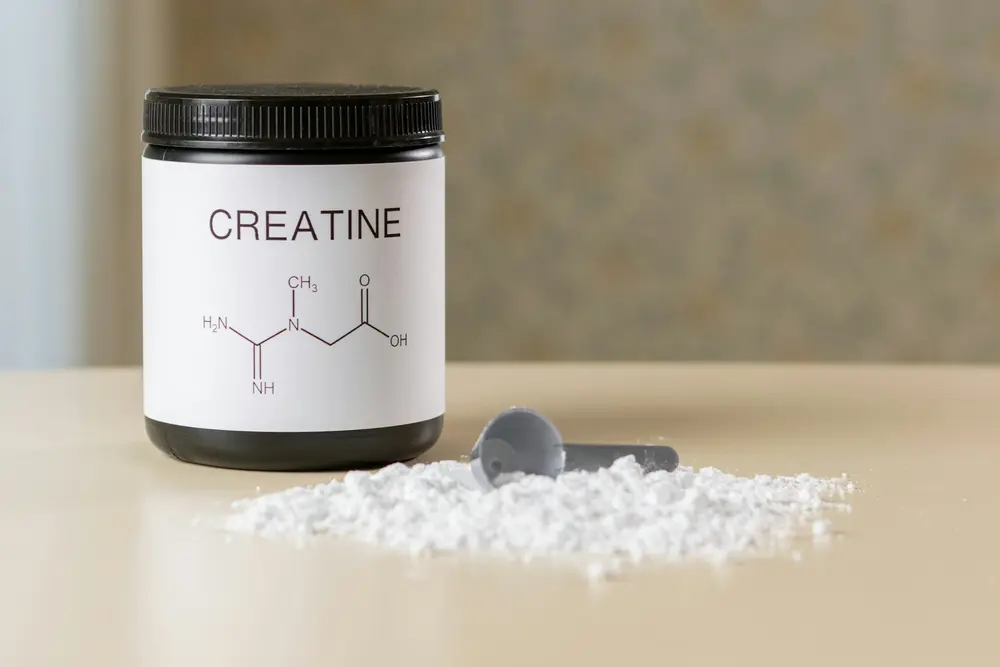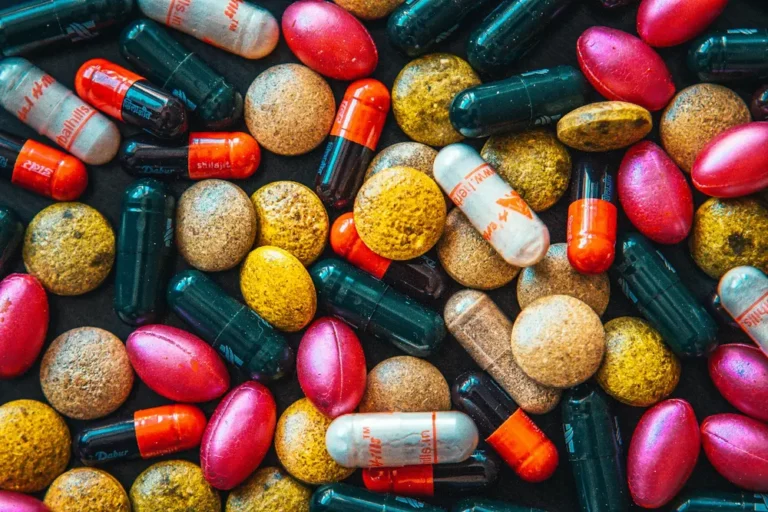What Does Creatine Taste Like? Busting Myths and Facts
Ever wondered what creatine tastes like? You’re not alone. The truth is, the taste of creatine can vary widely depending on the form you’re using and what you mix it with. Unflavored creatine tends to have a bland or slightly bitter taste, which, let’s be honest, isn’t everyone’s cup of tea. But don’t worry, there are plenty of ways to make it more palatable.
From mixing it with fruit juices and protein shakes to blending it into a delicious smoothie, there’s no shortage of tricks to mask that distinctive taste. And for those who prefer a more straightforward approach, flavored powders and creatine gummies are a game-changer. Stick around as I dive into the world of creatine and explore how to make it taste just right for your palate.
Understanding Creatine’s Natural Flavor
My initial encounter with unflavored creatine was quite the experience. I’d heard it was bland, but I wasn’t prepared for the slightly odd, bitter aftertaste it left. The texture was another surprise; it had a gritty consistency that didn’t fully dissolve in water, making it a bit of a challenge to drink. It’s not particularly off-putting, but it’s definitely not something you’d look forward to savoring.
Despite its natural lack of flavor, I quickly found that unflavored creatine is like a blank canvas—there’s a lot you can do to enhance its taste. By mixing it into juices, shakes, or even blending it with fruits, you can mask its blandness quite effectively. The key is to find the right mix-ins that balance out or completely cover the creatine’s natural taste profile.
Variations in Taste Among Different Creatine Forms
As I ventured further into the world of creatine, I discovered that not all creatine tastes the same. The market is flooded with various forms, from powders to pills, and even gummies, each presenting its own unique flavor experience.
For instance, I found that creatine monohydrate, the most widely available form, typically exhibits the bland and slightly bitter taste I mentioned earlier. However, there are flavored powders and creatinine gummies which are a game-changer. Flavors like orange and blue raspberry not only make creatine more palatable but also turn the whole experience into something I actually enjoy. The orange-flavored creatine gummies, in particular, were a revelation. They had this bright, zesty taste, reminiscent of fresh oranges, that made me forget I was taking a supplement. It was both refreshing and a pleasure to consume.
Moreover, it’s fascinating how these flavored forms have the potential to make sticking to a creatine regimen more enjoyable and, by extension, help with consistency in training. The small act of choosing a flavor you love can significantly uplift your workout routine, making the process as rewarding as the results.
Factors Influencing Creatine’s Taste
When delving into the taste of creatine, it’s crucial to recognize that not all forms of this supplement are created equal. My exploration has led me to uncover two primary factors that significantly influence the taste of creatine. Let’s dive into these aspects to understand more about what determines the flavor of this popular supplement.
The Impact of Creatine Formulations on Flavor
I’ve found that the form in which creatine is consumed plays a huge role in its taste. Creatine monohydrate, the most widely available form, is typically described as tasteless. However, it’s the texture that often leaves much to be desired, often described as gritty or chalky. This can affect the overall perception of taste, making it feel less neutral to some.
In contrast, there are flavored powders, which manufacturers have introduced to mask any potential off-putting flavors or textures. Flavors like orange and blue raspberry not only make the supplement more enjoyable to consume but also offer a variety in choice, which can keep one’s routine from becoming mundane.
Additionally, creatine is available in pill form, which completely bypasses the issue of taste for those who are particularly sensitive. Though the effectiveness and absorption rates can differ, this option is excellent for those primarily concerned with the taste or texture of powdered supplements.
Role of Mixing Liquids in Altering Creatine’s Taste
The choice of liquid used to mix with creatine powder is another factor that can significantly alter its taste. I’ve experimented with various liquids and noticed that water, being neutral, does little to enhance the flavor. It generally maintains that bland or slightly bitter aftertaste associated with unflavored creatine powders.
On the other hand, mixing creatine with fruit juices or smoothies can greatly improve the taste. The natural sweetness and flavors from the fruits can mask the bitterness and make the supplement far more palatable. I personally love mixing mine with orange juice; it not only masks any unpleasant taste but also provides a refreshing flavor that I look forward to.
Moreover, some fitness enthusiasts opt to mix their creatine with pre-workout supplements. Since pre-workouts are often designed to be tasty and are usually sweetened, combining the two can help dilute the less appealing taste of creatine while benefiting from the energy boost provided by the pre-workout.
Popular Methods to Enhance Creatine’s Palatability
When it comes to consuming creatine, taste can often be a barrier for many. Luckily, there are a plethora of ways to make creatine not only more palatable but also enjoyable. Let’s dive into some popular methods I’ve found effective in enhancing the taste of creatine.
Mixing Creatine with Fruit Juices for Improved Taste and Absorption
One method I’ve personally enjoyed is mixing creatine with fruit juices. This not only improves the taste significantly but also aids in the absorption of creatine due to the natural sugars present in the juice. I find that orange juice, with its bright, citrusy flavor, not only masks the bland or gritty taste of creatine but also gives a refreshing start to my day. Similarly, apple and grape juices serve as excellent mixers, offering a sweet and enjoyable twist to the typical creatine concoction.
The natural sugars in fruit juice can stimulate insulin production, which in turn helps to shuttle creatine into the muscle cells. It’s a win-win situation for me: better taste and potentially improved creatine uptake.
Utilizing Protein Shakes to Mask Creatine’s Flavor
Another method I’ve leaned heavily on is incorporating creatine into my protein shakes. This is a convenient way to consume creatine, especially for those who are already on a regimented supplement routine. Mixing creatine with a protein shake not only masks the taste effectively but also ensures that I don’t forget my daily dose.
I’ve experimented with various protein shake flavors, and I must say, chocolate and vanilla do an exceptional job at masking almost any additive’s flavor, including creatine. The creaminess of the protein shake blends seamlessly with the creatine powder, leaving no gritty texture. Plus, consuming creatine this way feels like I’m having a treat, which makes the entire experience more enjoyable.
Innovative Creatine Products for Better Taste
In the evolution of supplements, manufacturers have not turned a blind eye to the constant feedback about creatine’s taste. From the traditional powder that many find bland or unpleasant, there’s been a significant shift towards developing products that not only serve their purpose but are enjoyable to take. Let’s dive into some of these innovations.
The Rise of Flavored Creatine Supplements
Remember how I mentioned that the base form of creatine monohydrate is essentially tasteless? Well, it didn’t take long for the fitness industry to catch on that a spoonful of flavor could help the medicine go down, so to speak. These days, flavored creatine supplements are everywhere, coming in a plethora of varieties like blue raspberry, watermelon, or even exotic fruits. This innovation has been a game-changer for those who struggled with the unpalatable taste of pure creatine. By incorporating these delightful flavors, manufacturers have significantly widened the appeal of this essential supplement. It’s a simple but effective strategy: if it tastes good, you’re more likely to stick with your supplementation routine, ensuring you don’t miss out on the muscle-building benefits of creatine.
Benefits of Creatine Gummies as a Tasty Alternative
And then, there are creatine gummies—a relatively new kid on the block, but oh, how they’ve made a splash! Whoever thought of turning a supplement into a candy-like form was onto something big. I’ve tried these myself and can attest to their convenience and enjoyability. Creatine gummies make taking your daily dose as easy and pleasurable as popping a piece of candy. Here’s why they stand out:
- Portability: No need for water or a shaker bottle. You can have them on the go, making it nearly impossible to miss a dose.
- Taste: They come in various flavors, all designed to mask the underlying taste of creatine, making your supplementation period something to look forward to.
- Innovative: Let’s face it, taking your supplements in gummy form is just plain fun.
The introduction of gummies and flavored powders represents a significant advancement in the world of creatine supplements. It caters to a broader audience by ensuring there’s something for everyone’s taste, thus breaking down one of the major barriers to consistent supplement use. Whether you’re a fan of the traditional powder or craving something a bit more avant-garde, the market’s filled with options to make your creatine intake a more flavorful affair.
Creative Mixes for Consuming Creatine
When it comes to ingesting creatine, the taste can be a sticking point for many. That’s why I’ve experimented with various ways to make it more enjoyable. Let me dive into some creative mixes that significantly improved my creatine consumption experience.
Incorporating Creatine into Smoothies and Shakes
One of my all-time favorite methods is blending creatine into smoothies and shakes. This not only masks any unpleasant taste but also adds a nutritional punch to my daily routine. Here’s how I do it:
- Fruit Smoothies: I add a scoop of creatine to my fruit smoothies. The natural sweetness of fruits like bananas, strawberries, or mangos wonderfully masks any bitterness from the creatine. Plus, it’s a great way to get additional vitamins and fiber.
- Protein Shakes: Mixing creatine with my protein shake is a no-brainer for post-workout recovery. Whether it’s whey, soy, or pea protein, the robust flavors typically overpower any slight grittiness that creatine might have.
These concoctions have been game-changers, making my creatine intake as easy as enjoying my favorite drink.
Experimenting with Creatine in Various Beverages
Apart from smoothies and shakes, I’ve also tried incorporating creatine into various other beverages. The key here is to think outside the box. Here are a couple of successful experiments:
- Coffee: Mixing creatine with my morning coffee might sound odd, but it works. The robust flavor of coffee completely overwhelms the mild taste of creatine, offering a seamless way to combine my morning rituals.
- Herbal Teas: For a soothing evening option, I’ve found that adding creatine to herbal teas like chamomile or peppermint is quite effective. The flavors are gentle, and the creatine dissolves well, making it a perfect nighttime blend.
By exploring these options, I’ve not only managed to keep my creatine intake consistent but also discovered enjoyable new ways to consume my beverages.
What to Avoid When Mixing Creatine
Delving deeper into the creatine conversation, I’ve uncovered some critical insights on what to steer clear of when mixing creatine. This information might just be the game-changer you need.
Potential Negative Interactions with Certain Beverages
When it comes to enhancing creatine’s taste, not all beverages are your friend. I’ve found that acidic drinks such as citrus juices might not mix well with creatine. The reason? The acidic environment can degrade creatine, rendering it less effective. Similarly, hot beverages are also a no-go. Heat can break down creatine, which is why I always mix mine into cool or room-temperature liquids.
Another surprise was finding out that carbonated drinks can also interfere with creatine’s stability. The fizz might be satisfying, but the carbonation can accelerate the conversion of creatine to creatinine, a by-product that your body can’t use for muscle energy. Trust me, sticking to flat and non-acidic mixers is the way to go.
Considering Caffeine and Alcohol’s Effect on Creatine Efficacy
This bit caught my attention. I love my morning coffee and the occasional glass of wine, but when it comes to mixing these with creatine, there’s a bit of a gray area. Let’s break it down:
- Caffeine: There’s been a lot of back and forth about whether caffeine diminishes creatine’s benefits. While some studies suggest that caffeine might interfere with creatine’s ability to enhance performance, others show no significant impact. My take? If you’re a coffee lover like me, you might not need to give it up entirely. Just consider timing your caffeine intake several hours apart from your creatine to play it safe.
- Alcohol: On the other side, mixing creatine with alcohol is something I’d definitely caution against. Alcohol can dehydrate the body, and since creatine pulls water into your muscles, combining the two can lead to dehydration. Not to mention, alcohol consumption can impede recovery and muscle growth, counteracting the benefits you’re seeking from creatine in the first place.
In navigating the intricacies of mixing creatine, these insights have been eye-opening for me. Remember, the goal is to optimize the effectiveness of your supplement without sacrificing taste or, more importantly, your health. By avoiding these pitfalls, you’re well on your way to getting the most out of your creatine regimen.
Making Informed Choices for Creatine Consumption
Creatine’s taste—or lack thereof—shouldn’t be a barrier to considering it as part of your fitness regimen. It’s all about the product’s quality and how you choose to consume it. Remember, staying hydrated is key to maximizing its benefits without any undesired side effects. And if you’re unsure about your health status, a quick chat with your doctor can clear any doubts. Armed with this knowledge, you’re now better equipped to make informed decisions about using creatine to support your fitness goals. Here’s to your health and strength!
FAQ – Frequently Asked Questions
Can you mix creatine with Gatorade?
Yes, mixing creatine with Gatorade or any other sports drink is fine. The sugar in the drink can actually help improve creatine uptake into the muscles. Just be wary of combining creatine with caffeine.
Is it OK to dry scoop creatine?
Taking creatine without liquid (dry scooping) is not recommended due to potential inhalation or choking hazards. It’s best to mix creatine with a liquid for safe consumption.
What happens if I miss a day of creatine?
Missing a single day of creatine won’t significantly impact your muscle creatine levels. Once your muscles are saturated with creatine, missing occasional doses won’t affect your creatine stores or performance benefits.







